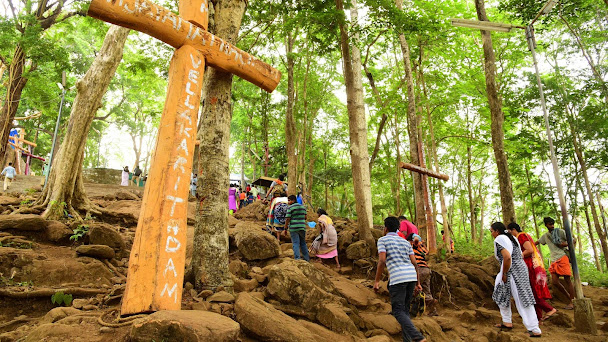Pandalam Palace: The house of Swami Ayyappan
The Pandalam family is said to be descendants of the Pandya Kings who ruled the South during the 6th century. The Pandya rule over the centuries became weak & the constant attacks from other rulers made them flee their kingdom, this was the time when a branch of the Pandyas fled the land & reached Konni in Pathanamthitta. The Pandalam dynasty came into existence with the help of the Venad rulers who were considered powerful in the South of Kerala. The Venad rulers gave the fleeing Pandyas a place in Pandalam to start their small rule. The whole clan of the Pandalam family finally came & established the rule around the Pandalam in 1194 AD. The area for administration of the Pandalam Kingdom covered a vast area which included many hills, one among them was Sabarimala. The ruler was called Airur Swarupam & he was solely responsible to administer as a vassal of the Venad kingdom. The Pandalam Rajas were known to accept people from all religions & secularism was one of their themes as they helped the Muslim & Christian missionaries in building churches & mosques in places under their rule.
The most important legend is about the relation of Lord Ayyappa with the Palace. The Pandalam kings belonged to the Bhargava Gotra & King Raja Rajasekhara once on his hunting expedition heard a baby crying in the woods. When he found the child, it was a radiant boy with a bell around his neck, seeing the divine child he thanked the Lord & brought him back to the palace where they named the boy Manikandan. This boy who later became Lord Ayyappa is said to have played & lived his childhood & adolescence in the Pandalam palace. The palace construction is simple considering it was built to house a dynasty using mud, stone, wood & bamboo. The roof has a terracotta thatched roof & not much of an elaborate wood carving exists as one sees in other Venad palaces. The Valiakoikkal temple is built according to the design of Sabarimala & it was constructed by Raja Rajashekhara after Lord Ayyappa left for Sabarimala. The king placed a salagrama he brought from Sabarimala as an idol here & is still worshipped. The royal ornaments procession to Sabarimala starts from this temple. The main palace complex has many rooms which possess idols & prayers are conducted here on a ritual basis. The central Naalukettu is typical of Kerala architecture. The Thevara Puras (prayer rooms) along the palace complex are sacred & so visitors need to follow rules while entering them. Another temple one can visit here is the Kaipuzha temple which is mainly dedicated to Lord Krishna & the old Narasimhamoorthy today is replaced by Santhana Gopalan due to unholy incidents which happened at the palace. The Scrambical palace within the complex is a place of high importance as this is where the most holy ornaments of Lord Ayyapan are stored. The palace members also enjoy certain privileges during their visit to Sabarimala based on the rights given by the Lord himself. The eldest member of the palace or King is the last to pray at the shrine on Makaravilakku day. Also, every devotee who goes on the pilgrimage is needed to carry an irumudikettu on head as a ritual but only the members of the Palace are exempted from carrying it on their pilgrimage to the shrine. The Palace thus is part of the pilgrimage & most devotees pray at the Valiyakoikkal temple on their travel to Sabarimala.
The Pandalam dynasty lost its importance when the Travancore kingdom came into existence in the 18th century under the leadership of Marthanda Varma. As part of expanding his kingdom, Marthanda Varma annexed all the smaller territories but left out Pandalam considering the years of cordial relations they had with the Venad rulers. This cordial relation was also extended by Pandalam during the Malabar invasion of Tipu but the cost of the war was so high for Travancore that Pandalam was asked to pay for the cost of the war in instalments. The biggest source of the Pandalam dynasty’s income were the donations received at Sabarimala but the cost of the war instalments were so high that the Pandalam Raja in 1794 hypothecated the income from Sabarimala to the Travancore kingdom. By 1820 the economic situation of the Pandalam family was distressful & so the Travancore government came forward with an agreement promising each member of the family future progenies befitting their status by consenting to collect all the revenues in Pandalam under the Travancore government’s name which was accepted & the Pandalam kingdom was finally merged with Travancore. The family with this merger also lost all control over the temple of Sabarimala & only the guardian rights of the temple were provided to the Pandalam palace.
There have been many historians who have debated the relation of Pandalam palace with that of Lord Ayyappan who is considered to be Shastha & the temple is said to have been present at Sabarimala from the time of Lord Parasurama. The debate can keep going but one cannot miss the visit to the Pandalam Palace as it is considered to have had the presence of Lord Ayyappa himself.



Comments
Post a Comment